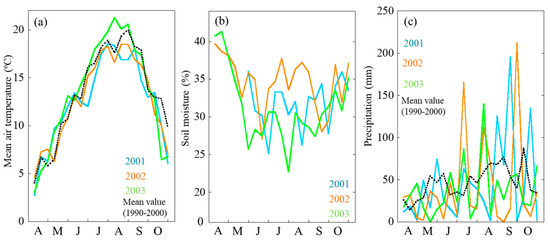Plant Morphofunctional and Evolutionary Traits under a Climate Change Scenario
A topical collection in Plants (ISSN 2223-7747). This collection belongs to the section "Plant Response to Abiotic Stress and Climate Change".
Viewed by 9337Editors
Interests: heavy metals; metal homeostasis; phytochelatins; phytochelatin synthase; glutathione; plant evolution; lichens
Special Issues, Collections and Topics in MDPI journals
Interests: physiological plant ecology; plants and climate change; plant growth and development; plant stress physiology
Interests: plant physiological ecology; modelling of environmental botany; stress physiology; stomatal conductance; photosynthesis; ozone; drought; climate change
Special Issues, Collections and Topics in MDPI journals
Topical Collection Information
Dear Colleagues,
We are pleased to announce that we are launching a Special Issue of Plants entitled “Plant Morphofunctional and Evolutionary Traits under a Climate Change Scenario”.
We would be delighted to receive your authoritative contribution, and we look forward to working together to collect high-quality research articles and review articles in all the fields related to the above topic.
Because the aim of this Special Issue is to illustrate, through selected works, cutting-edge research in "Plant Morphofunctional and Evolutionary Traits under a Climate Change Scenario", we encourage Editorial Board Members of our Section to contribute by sending papers reflecting the latest progress in their research field or to invite relevant experts and colleagues to do so.
In particular (but not exclusively), this Special Issue welcomes high-level manuscripts related to interactions between plants (and/or the abovementioned organisms) as well as the following:
Elevated temperature;
Excess (flooding) and/or lack of water (drought);
Hypoxia and/or anoxia;
Oxidative stress;
CO2, CH4, N2O, and other greenhouse gases;
Tropospheric ozone;
Volatile organic compounds (VOC);
Global change
Prof. Dr. Luigi Sanità di Toppi,
Prof. Dr. Howard S. Neufeld
Dr. Yasutomo Hoshika
Dr. Mirwais Qaderi
Guest Editors
Manuscript Submission Information
Manuscripts should be submitted online at www.mdpi.com by registering and logging in to this website. Once you are registered, click here to go to the submission form. Manuscripts can be submitted until the deadline. All submissions that pass pre-check are peer-reviewed. Accepted papers will be published continuously in the journal (as soon as accepted) and will be listed together on the collection website. Research articles, review articles as well as short communications are invited. For planned papers, a title and short abstract (about 100 words) can be sent to the Editorial Office for announcement on this website.
Submitted manuscripts should not have been published previously, nor be under consideration for publication elsewhere (except conference proceedings papers). All manuscripts are thoroughly refereed through a single-blind peer-review process. A guide for authors and other relevant information for submission of manuscripts is available on the Instructions for Authors page. Plants is an international peer-reviewed open access semimonthly journal published by MDPI.
Please visit the Instructions for Authors page before submitting a manuscript. The Article Processing Charge (APC) for publication in this open access journal is 2700 CHF (Swiss Francs). Submitted papers should be well formatted and use good English. Authors may use MDPI's English editing service prior to publication or during author revisions.
2021
Jump to: 2020
2020
Jump to: 2021
Planned Papers
The below list represents only planned manuscripts. Some of these manuscripts have not been received by the Editorial Office yet. Papers submitted to MDPI journals are subject to peer-review.
Title: Responses to increased salinity and severe drought in the Eastern Iberian endemic species Thalictrum maritium (Ranunculaceae), highly threatened by climate change
Authors: Óscar Vicente Meana
Affiliation: Instituto de Conservación y Mejora de la Agrodiversidad Valenciana (COMAV) , Universitat Politècnica de València, Camino de Vera s/n, 46022 Valencia, Spain












